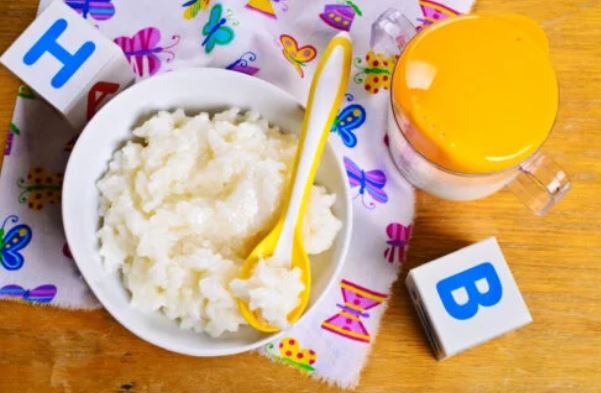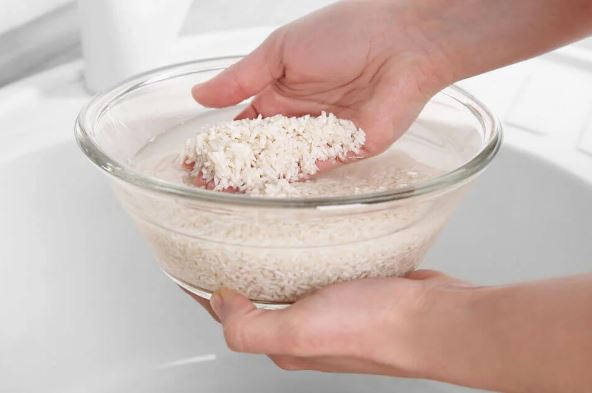As a parent, it is normal for you to wonder how to introduce rice into your child’s diet. See how healthy you can do it with two practical recipes.

Cereals are one of the first foods to be incorporated in the infant. But, how to introduce rice to the baby’s diet? The answer includes certain special preparations and storage cares to guarantee its properties.
According to the American Academy of Pediatrics, it is recommended that children begin to try new foods from 6 months of age. This way they will discover flavors and textures different from breast milk. These new products are classified as solid and rice is one of the best known.
This cereal is rich in carbohydrates, vitamins and minerals essential for the growth of the baby. In addition, it is gluten-free and practical to prepare from home.
Benefits of rice in the baby’s diet
Rice contains high values of starch as the main source of energy, iron, magnesium and vitamins of the B complex, such as thiamine, riboflavin and niacin. These nutrients are essential for the growth and development of the baby.
For many experts, rice is the first cereal of choice recommended by pediatricians when introduced as a complementary diet. It has a low fat content, is very easily digested and is hypoallergenic.
In addition, the Chilean Nutrition Magazine indicates that resistant starch is formed in rice when it is cooked and then cooled. This improves the health of the intestinal flora, behaving like a prebiotic.
The advantage of being gluten-free allows its introduction after 4 months, although the pediatrician will always have the last word. Rice may lower your risk of celiac disease, as can other grains such as corn, quinoa, and buckwheat.
Another benefit of rice in the baby’s diet is the practicality of its preparation. It is cheaper than any commercial cereal and is easy to preserve.

Once cooled, rice has a type of starch that favors the healthy growth of the intestinal microbiota.
How can I give my baby rice for the first time?
Before answering how to introduce rice to the baby’s diet, it must first be considered that when solid foods are incorporated the child must have the oral skills to swallow. The Spanish Association of Pediatrics recommends a gradual introduction and in small portions.
They are progressively increased according to growth and while breastfeeding is maintained. The amount is a function of the energy density of the food.
To introduce the rice, 1 to 2 tablespoons of the cereal should be mixed with 4 to 6 tablespoons of formula, water or breast milk. It is also valid with natural fruit juice without sugar.
It is recommended that the rice is fortified with iron to ensure its intake with the new foods. It is likely that the cereal will be introduced with the bottle at first, while it adapts. Then, little by little, it will take to its more solid, porridge-like form.
Using rice as the first cereal does not mean that it is the only one. The diet must be varied, because if the rice is left for a long time, arsenic contamination can occur, according to the United States Food and Drug Administration.
Before or after introducing the rice, pureed fruits and vegetables should be included. The recommendation is always to do it one by one, to identify allergies or sensitivities.
Baby rice porridge recipes
Preparing the rice porridge or cream from home is cheaper than making it from commercial cereals. Follow each recipe carefully to make it your child’s favorite.
1. Porridge with rice flour
You need ingredients:
Enough raw whole rice.
1 cup of water, formula, breast milk, natural fruit juice, or vegetable broth.
Follow this step by step:
1.Put the whole rice in a grinder or coffee processor. Grind it into a fine powder or rice flour. You can sift it to remove coarse grains.
2.Heat the water, milk or other liquid and when it is boiling add 20 grams of the rice flour or 1 large tablespoon, previously dissolved in a small portion of water. Reduce heat to a minimum.
3.Keep cooking for 5 minutes, stirring all the time until little by little a homogeneous cream forms. If you think the texture is too thick, then add more liquid.
4.Let cool and separate into small portions before giving it to the baby. If he’s satisfied, don’t force him to eat it all.

It is not necessary for the baby to eat everything we offer. It is important to recognize when they are full.
2. Porridge with cooked rice
In this case, for the recipe you need the following ingredients:
50 grams of refined or brown raw rice.
1 cup of water, formula or breast milk, natural fruit juice or vegetable broth.
The procedure is the next:
1.Cook the rice in the usual way or following the manufacturer’s recommendations, but without adding salt or sugar.
2.Once cooked, drain it and let it rest before placing it in the blender.
3.As you blend, add your preferred liquid little by little until you get a creamy texture.
4.Divide it into small portions before giving it to the baby.
Storage
There are different options to preserve the porridge without undergoing major changes in its properties. You can keep it in the refrigerator for 48 hours. When you have to use it again, add more liquid, since the cold in the refrigerator thickens it.
In case you have to keep it for a longer time, then you can opt for freezing. After cooking it, you must pack it in a special container, such as those used for microwaves. It will remain unchanged for at least one month.
When you go to make rice flour, make sure you process enough of it, as you can keep it in an airtight glass container in the freezer or at room temperature.
Introduce the rice according to the pediatrician’s indication
Remember that before introducing rice into your baby’s diet, you should consult your pediatrician. He will tell you if he has all the skills to swallow solids.
Rice porridges are a practical, safe, economical and nutritious way to start complementary feeding in our babies. Prepare your first dishes with this cereal.





